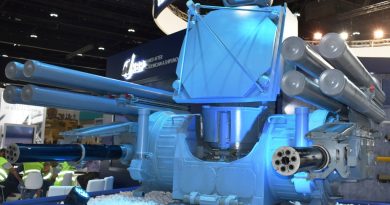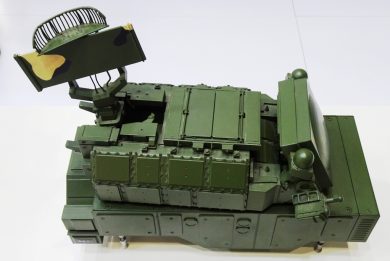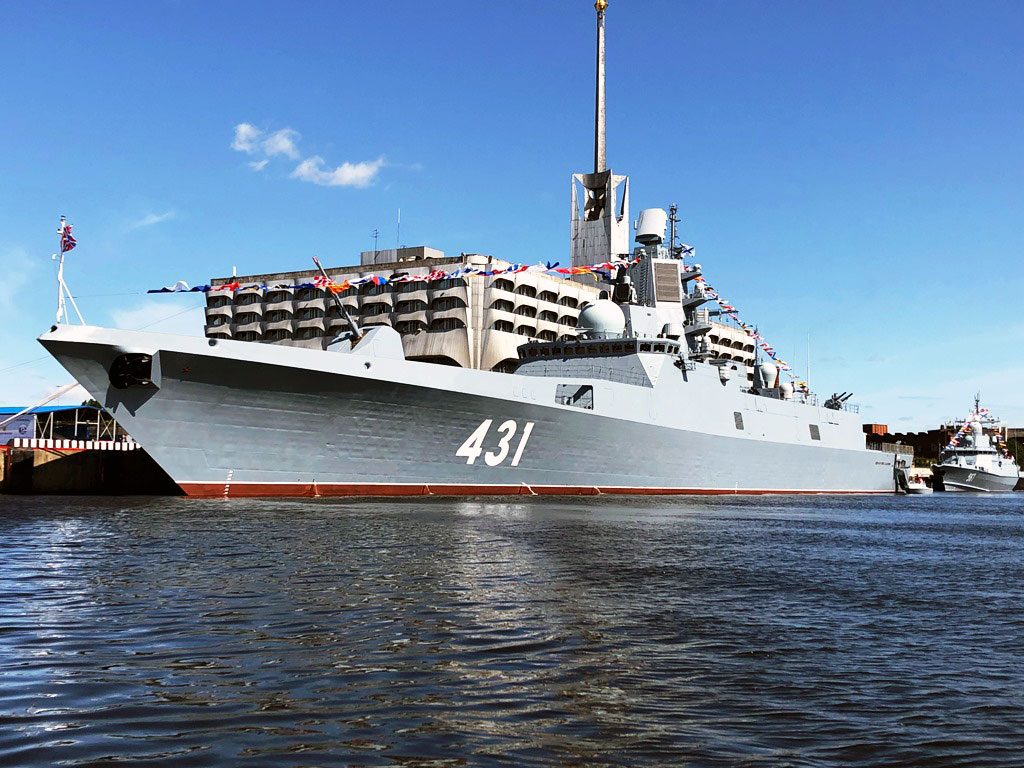
Russian Navy’s percentage of modern hardware reaches 62%
29 July 2019
By Dmitry Fediushko, Moscow
“Russia pays great attention in strengthening its Navy. The percentage of the Service’s modern hardware has exceeded 62%,” the President of the Russian Federation Vladimir Putin said during the Naval Day parade held on 28 July in Saint Petersburg., adding that the tasks being accomplished by the Russian Navy (Voyenno-Morskoy Flot, VMF) require modern knowledge and advanced professional skills.
According to Putin, the Service is now upgrading its inventory of naval ships, logistics vessels, and infrastructure at quick rates. “The VMF will be reinforced with 15 naval ships and boats before the end of the year. [We] upgrade its Naval Aviation [Morskaya Aviatsiya, MA] and Coastal Troops [Beregoviye Voyska, BV] and modernize infrastructures at the [VMF’s] naval bases. [We] have also restored the practice of around-the-world cruises,” added Putin.
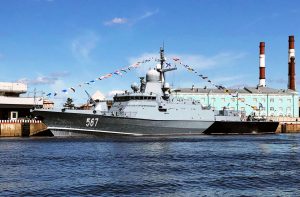
Forty-three naval ships, more than 4,000 servicemen, and 41 aerial vehicles participated in the Naval Day parade. The VMF showcased a number of brand new platforms, including the Project 22350 (NATO reporting name: Gorshkov-class) frigate Admiral Kasatonov (pennant number 454), Project 22800 (Karakurt-class) guided missile corvette Mytishchi (pennant number 567), Project 20385 (Steregushchiy-class) guided missile corvette Gremyashchiy (pennant number 337), Project 12700 (Alexandrite-class) mine countermeasures (MCM) vessel Ivan Antonov (pennant number 601), and Project 677 (Lada-class) diesel-electric submarine Kronstadt. Those new naval platforms were accompanied by some proven ships, including the Project 21631 (Buyan-M-class) guided missile corvette Serpukhov armed with the Kalibr-family (SS-N-27 Sizzler) sea-launched cruise missiles (SLCMs), and the Project 12411 (Tarantul-III Mod-class) guided missile boat.
The formation of the Russian naval ships was headed by a full-scale mock-up of the three-mast wooden battleship Poltava armed with 54 cannons.
The VMF’s parade in Saint Petersburg was joined by two foreign naval ships, namely, Project 052C guided missile destroyer Xi’an (pennant number 153) of the China People Liberation Army Navy (PLAN) and Project 1135.6 (Talwar-class) guided missile frigate Tarkash of the Indian Navy. The latter was built for India at Russia’s Yantar Shipyard (a subsidiary of the United Shipbuilding Corporation) in 2007-2012.
Despite a large number of brand new naval platforms, the air component of the parade included only VMF’s MA in service aircraft: the Sukhoi Su-30SM (Flanker-H) and Su-33 (Flanker-D) multirole combat aircraft, the Beriev A-50 (Mainstay) airborne early warning & control (AEW&C) aircraft, the Mikoyan-Gurevich MiG-29K (Fulcrum-D) naval fighter jets, the Ilyushin Il-38N (May) and Tupolev Tu-142M3 (Bear-F) maritime patrol aircraft (MPA), Ilyushin Il-78 (Midas) aerial tanker, and a number of rotary-wing aircraft, including Kamov Ka-27 (Helix-A) and Ka-27M (Helix-A Mod) anti-submarine helicopters, Kamov Ka-29 (Helix-B) marinised transport helicopters, Ka-31R (Helix-B) AEW&C helicopters, and Mil Mi-8 (Hip) utility rotorcraft.
This year the Naval Day parade was preceded by the 9th International Maritime Defence Show (IMDS 2019), which was held in Saint Petersburg July 9 to14. The exhibition was focused on coastal defence and support systems rather than on naval ships.
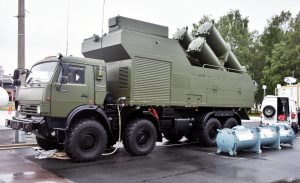
The newest Rubezh-ME mobile coastal defence missile system (MCDMS) developed by NPO Taifun (a subsidiary of Concern Morinformsystema-Agat) was the most innovative weapon showcased at the IMDS 2019. In fact, the Rubezh-ME is a less expensive and more compact variant of the well-known Bal (SSC-6 Sennight) MCDMS that is adopted by the Russian military and supplied to the VMF’s coastal units. The Rubezh-ME employs four ready-to-use Kh-35UE (AS-20 Kayak) anti-ship missiles with a range of up to 260 km. The MCDMS incorporates up to eight combat vehicles, a mobile command and control post, and an optional self-propelled radar. According to the Tactical Missile Corporation (KTRV), the tests of the land-based variant of the Kh-35UE will be finished before year end.
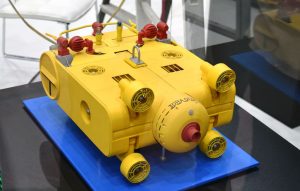
The KTRV unveiled a counter-mine unmanned underwater vehicle (UUV) fitted with the Alexandrite-ISPUM-E counter-mine system, which is also adopted on Russian Navy’s Project 12700 MCM vessels. The UUV allows deactivation or destruction of sea mines at a depth of up to 300 meters.
The Radar-MMS company unveiled its new BPV-45 vertical take-off and landing (VTOL) unmanned aerial vehicle (UAV) that carries a synthetic aperture radar. The VTOL UAV’s sensor suite comprises a TV-camera, thermal imager, gravimetric sensor, and two-axis magnetometer, allowing the vehicle to detect surface and ground objects at distances of 50 km and 20-30 km, respectively. However, the UAV is primarily intended for civil applications.
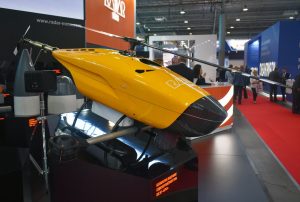
Rostec’s Concern Tecmash unveiled its new Zagon-2E anti-submarine guided bomb. The munition weighs 120 kg and is fitted with a cumulative high-explosive fragmentation warhead and an active sonar-based guidance system. The bomb engages underwater combatants at a depth of up to 600 meters and can be carried by Il-38N and Tu-142M MPAs and Ka-28 anti-submarine helicopters.
At the IMDS 2019, NPO Taifun also announced the delivery of the 100th combat vehicle of the Bal MCDMS system to the VMF.
Photos by Dmitry Fediushko


